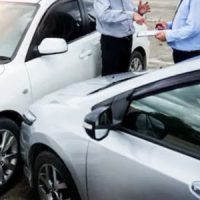Blind Spot Accidents

Good visibility is crucial to safe driving, which is why all drivers should ensure that nothing interferes with their ability to see objects around their vehicles. Unfortunately, blind spots remain a significant car accident risk, as many drivers fail to take the precautionary measures that they should, especially when changing lanes or merging.
What are Blind Spots?
Blind spots are the areas in a driver’s range of vision that he or she cannot see and are located in the back rear corners and on the sides of the vehicle, as well as behind the windshield pillars. Basically any part of a vehicle that isn’t glass (i.e. transparent) can be a blind spot. Although blind spot detectors and warning systems have gone a long way towards helping drivers avoid these kinds of accidents, they are no guarantee of safety. To fully eliminate the risk of a blind spot accident, drivers need to check their side and rearview mirrors and look over their shoulders before changing lanes.
Common Causes of Blind Spot Accidents
Human error is to blame in most blind spot accident cases. This can include everything from failing to check one’s mirrors or forgetting to look over one’s shoulder, ignoring a blind spot detection warning, driving too fast for the conditions, or falling asleep at the wheel. The accidents that can result from this type of negligence are often serious, ranging from rollovers to sideswipe accidents. The severity of the injuries sustained in a blind spot accident will largely depend on the type of accident in question and the speed at which the vehicles were traveling. A sideswipe accident, for instance, will likely lead to significant property damage, but only minor injuries, while rollover accidents, which are common amongst high profile vehicles, like SUVs, typically result in more serious injuries, such as lacerations, broken bones, and head trauma.
When to Check Your Blind Spots
Changing lanes isn’t the only time that drivers need to check their blind spots. Drivers are also encouraged to do so before they:
- Back out of a parking spot or driveway;
- Make a three point turn, or U-turn;
- Merge with traffic;
- Pull out from a curb; and
- Park in a garage, lot, or driveway, or on the street.
By checking one’s blind spots regularly, drivers can go a long way towards lowering their odds of causing a car accident. Unfortunately, there’s not much we can do to ensure that other drivers use the care they should when it comes to preventing blind spot accidents. We can, however, take a few precautionary measures that can help keep us safe, including:
- Slowing down when merging or changing lanes to make sure that a driver isn’t in a driver’s blind spot;
- Adding blind spot mirrors to existing side mirrors;
- Using our blinkers before turning;
- Using blind spot detection and warning systems;
- Keeping an eye out for other vehicles, pedestrians, and cyclists; and
- Glancing over our shoulders before changing lanes.
Fortunately, even if you were involved in a blind spot accident through no fault of your own, you could still be entitled to compensation for your losses.
Call Today for Help with Your Car Accident Claim
To speak with an experienced Tampa car accident lawyer about seeking compensation for your accident-related medical bills, lost wages, and property damage, call Anderson & Anderson today.
Sources:
saaq.gouv.qc.ca/en/road-safety/modes-transportation/automobile/blind-spots
driversed.com/trending/how-blind-spots-affect-each-driver-and-how-stay-safe
